 One of the all times most fascinating DIY web sites on electronics, has to be The Lampizator. Lukasz Fikus has made it his mission in life to put tubes into every half decent sound producing device on this planet. I am not sure when this happened, but at some point he started deviating, crossing the solid state line and getting dangerously close to SMDs and other very much untubular things. This is not a bad thing. Not at all. For now Lukasz Fikus has given us an extremely detailed view into how to tweak some niftiness out of the Logitech Squeezebox Duet. If you are interested in real modding, do yourself a favour and pay this man a visit and enjoy his ongoing endeavours.
One of the all times most fascinating DIY web sites on electronics, has to be The Lampizator. Lukasz Fikus has made it his mission in life to put tubes into every half decent sound producing device on this planet. I am not sure when this happened, but at some point he started deviating, crossing the solid state line and getting dangerously close to SMDs and other very much untubular things. This is not a bad thing. Not at all. For now Lukasz Fikus has given us an extremely detailed view into how to tweak some niftiness out of the Logitech Squeezebox Duet. If you are interested in real modding, do yourself a favour and pay this man a visit and enjoy his ongoing endeavours.
media|STREAMERS
The market for media hubs is difficult to navigate – I try to chart some waters here
Author Archives: Thomas Nielsen
Lampizating a Squeezebox
Linksys Wireless Home Audio
![]()
![]()
![]()
![]()
![]()
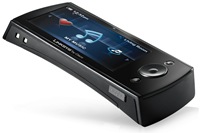 This time Linksys (by Cisco) has gone completely overboard in a Sonos-aspiring devices galore outfit leaving absolutely almost nothing left to want.
This time Linksys (by Cisco) has gone completely overboard in a Sonos-aspiring devices galore outfit leaving absolutely almost nothing left to want.
Like Sonos the Linksys WHA series consists of a receiver that connects to an existing sound system, a receiver with a built-in 50W amplifier and a super delicious touch screen remote. Additionally the WHA offers a more traditional remote, an iPod dock, wireless speakers for the WHA amplifier and a soon to arrive all-in-one device with a built-in CD drive.
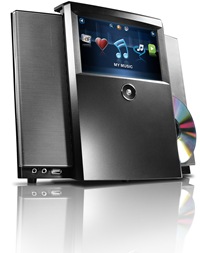 There are a few open questions, such as does it support flac and does the CD equipped station rip as well as play? If those two questions can be answered positively, I am sure Sonos will find themselves with a nice competitor here. Of course, the design is still a plus for Sonos which is definitely not the case for the Linksys. Nevertheless, this is an unusually complete package to introduce this suddenly.
There are a few open questions, such as does it support flac and does the CD equipped station rip as well as play? If those two questions can be answered positively, I am sure Sonos will find themselves with a nice competitor here. Of course, the design is still a plus for Sonos which is definitely not the case for the Linksys. Nevertheless, this is an unusually complete package to introduce this suddenly.
PS Audio PerfectWave Transport Memory Player
![]()
![]()
![]()
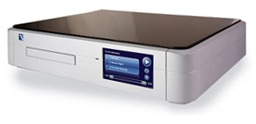 PS Audio are the people who gave us internet attached power conditioning so it is no surprise that they are the first to unveil a HRx capable player [almost like being a fax machine pioneer]. As so many other things on this blog it really doesn’t belong here, but it has one redeeming feature making it somehow fit in rather snuggly: It rips, stores and plays, and it connects to the internet.
PS Audio are the people who gave us internet attached power conditioning so it is no surprise that they are the first to unveil a HRx capable player [almost like being a fax machine pioneer]. As so many other things on this blog it really doesn’t belong here, but it has one redeeming feature making it somehow fit in rather snuggly: It rips, stores and plays, and it connects to the internet.
First the old stuff. The perfectWave Transport rips the CD using the venerable Exact Audio Copy and stores it internally. Then the data is read back and played. This should eliminate timing related jitter by ways of simple buffering. While this idea itself is pretty obvious it wasn’t until Genesis released their Digital Lens in the mid-nineties it started to cost money acquired its flock of followers. Add to this a vendor driven service for downloading album artwork and song lyrics, more or less aptly buzzing it as cloud computing, you have a quite interesting CD transport.
Now the new stuff. The new player now supports the HRx formatted media. Not in itself an audio standard but simply a DVD with WAV files on it at a resolution of 24bit at 176.4KHz.
Asus Eee Top
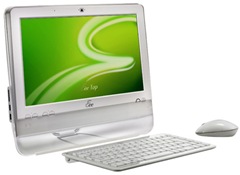 This is not a streamer. It is not even a media center of any kind. It is quite simply a PC and not a very impressive one at that – spec-wise; an Asus Eee sporting a 15.4” touch monitor and driven by a measly Atom processor. It does, however, have enough power to run a standard media player such as Foobar2000, Songbird or indeed Windows’ own Media Player. And this is what makes it suddenly stand out. For a relatively small investment you get something that operates like a Sooloos, albeit without the otherworldly audio capabilities, and looks cool on almost any table top.
This is not a streamer. It is not even a media center of any kind. It is quite simply a PC and not a very impressive one at that – spec-wise; an Asus Eee sporting a 15.4” touch monitor and driven by a measly Atom processor. It does, however, have enough power to run a standard media player such as Foobar2000, Songbird or indeed Windows’ own Media Player. And this is what makes it suddenly stand out. For a relatively small investment you get something that operates like a Sooloos, albeit without the otherworldly audio capabilities, and looks cool on almost any table top.
RipNAS
![]()
![]()
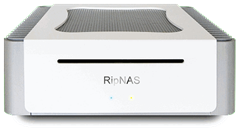 The RipNAS is not an audio streamer per this blog’s usual definition but a uPnP compatible server based on Microsoft Windows Home Server. Devices that are compatible with the uPnP standard can then connect to the RipNAS and use it for storage. What makes the device stand out is its built-in optical drive that lets you rip automatically to a number of audio formats, including Flac. Just insert a CD and rip away. The device comes preconfigured with 320GB, 640GB or 1TB harddrives and can be extended with a matching external drive to up to 7TB. That should suffice for all but the most extreme of needs.
The RipNAS is not an audio streamer per this blog’s usual definition but a uPnP compatible server based on Microsoft Windows Home Server. Devices that are compatible with the uPnP standard can then connect to the RipNAS and use it for storage. What makes the device stand out is its built-in optical drive that lets you rip automatically to a number of audio formats, including Flac. Just insert a CD and rip away. The device comes preconfigured with 320GB, 640GB or 1TB harddrives and can be extended with a matching external drive to up to 7TB. That should suffice for all but the most extreme of needs.
For streaming the device supports Logitech SqueezeCenter, Sonos , iTunes and uPnP. Also it connects automatically to such services as freedb and MusicBrainz for tagging music. Needless to say; since it is a Windows Home Server you can install just about any piece of software you can think of, such as automated backup of music or online purchases. Indeed, the server can be used simply as a Windows file server.
Sooloos makes headlines yet again
Or one more headline, to be truthful. Stereophile magazine promoted the Sooloos Music Server System from editor’s choice to product of the year…!
Let’s try that again: Stereophile awarded a from-the-bone-out digital sound source one of the most prestigious accolades of the business over a bunch of analogues. Now, that should raise some eye brows. Way to go, Sooloos.
Meridian to acquire Sooloos
Friday last, news hit the streets that Meridian, a genuinely household name in British hifi circles, had bought Sooloos. Meridian are renowned for their compact solutions but has little experience in streaming audio. The fact that Sooloos has exactly that and on top of that a compatible outlook on life, sound and what-not makes this a truly holy alliance. Sooloos is in itself an interesting system but what is really interesting in my view, is if Meridian will come up with a Sooloos compatible compact client to match it.
Nokia Home Music
![]()
![]()
![]()
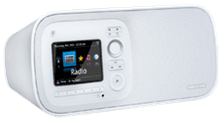 Sporting a wifi connection, wired ethernet and FM reception, this internet radio is very much that; an internet radio. A slick design centered around a pretty colour display and cool navigation controls paired with uPNP support and self sufficiency makes this a very attractive kitchen music piece, in so far that kitchen can mean just about any room in the house not equipped with a stereo system. It is yet unclear which media formats are supported.
Sporting a wifi connection, wired ethernet and FM reception, this internet radio is very much that; an internet radio. A slick design centered around a pretty colour display and cool navigation controls paired with uPNP support and self sufficiency makes this a very attractive kitchen music piece, in so far that kitchen can mean just about any room in the house not equipped with a stereo system. It is yet unclear which media formats are supported.
Bang & Olufsen BeoSound 5
![]()
![]()
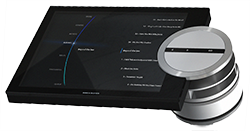 The long anticipated BeoSound 5 was announced yesterday. In terms of surprises the only one appears to be the release timing, in so far that it does not show much novelty over its competition in this segment. One major feature, though, is a system which based on metrics* is capable of selecting other songs similar to the one just finished. More of the same, as it is aptly named. I fear, however, that an equally fitting name could turn out to be Name that influence; when seeded with some middle of the road country tune it starts playing 2.000 hours worth of songs only distinguishing themselves from the seed track by lyrics and cover art.
The long anticipated BeoSound 5 was announced yesterday. In terms of surprises the only one appears to be the release timing, in so far that it does not show much novelty over its competition in this segment. One major feature, though, is a system which based on metrics* is capable of selecting other songs similar to the one just finished. More of the same, as it is aptly named. I fear, however, that an equally fitting name could turn out to be Name that influence; when seeded with some middle of the road country tune it starts playing 2.000 hours worth of songs only distinguishing themselves from the seed track by lyrics and cover art. 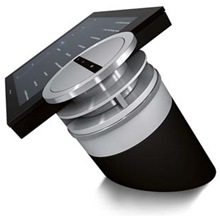 Well, I guess it can be turned off.
Well, I guess it can be turned off.
Looks are, expectedly, nice as always as is the user interface and means of operation. No easy solutions there. A nifty three-piece scroll/toggle-wheel operates the navigation system. An internal 500GB hard drive makes for storage and a 10.4” crystal clear monitor informs you of all you need to know.
Once I know the specs in detail [Flac, uPnP, resolution etc.] I will update this article. Let’s just hope the specs will have something substantial to show. Comparing the BeoSound 5 with some of the other players on the market, particularly in this price range, it does not look promising however much I wanted it to.
*More of The Same will base its decision on spectral analysis and beat detection schemes. With such services as Last.fm and Pandora comparisons are done somewhat differently, in that recommendations of new songs are made primarily by selecting songs from playlists made up from other people’s playing habits; playlists having some likeness with your own. The difference being, of course, that one system gives you new songs you may like even if they are different from what you otherwise play, while the other plays what you already have on your system maintaining a certain uniformity.
Headroom Total BitHead
![]()
![]()
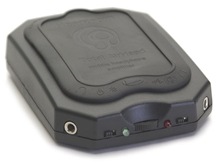 Headroom started in the early nineties making audiophile headphone amps. Today they boast a phenomenal line-up of more than 20 different DAC adorned amplifiers and aftermarket cable-upgrades for just about every serious headphone on the shelf.
Headroom started in the early nineties making audiophile headphone amps. Today they boast a phenomenal line-up of more than 20 different DAC adorned amplifiers and aftermarket cable-upgrades for just about every serious headphone on the shelf.
The Total BitHead comes with a built-in USB port which makes it a perfect computer soundcard replacement. It should be noted, however, that the BitHead uses a 16bit D/A converter. The unit comes with velcro pads to affix an iPod or another MP3 player onto it, but quite frankly it is the USB input that makes this gadget interesting. Not an analogue line-in.
Copyright © 2025. Powered by WordPress & Romangie Theme.